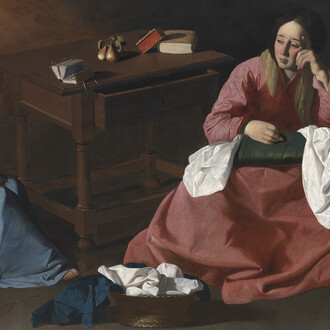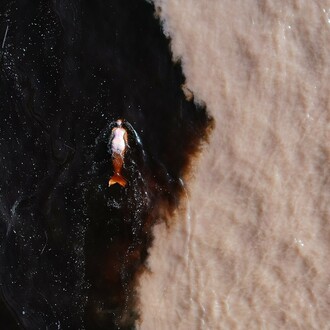JD Malat Gallery is proud to present Reinassance, the much-anticipated comeback exhibition by Conrad Jon Godly.
Spanning over two floors of the London gallery, this is Godly’s largest body of work to date.
Not only is this the renowned Swiss artist’s first exhibition in four years, but it also bears the title Renaissance as a declaration of his return and form of ‘rebirth’.
Indeed, in the artist’s own words “after four years, when I was closer to death than to life, I feel reborn”.
This exhibition is a rebirth in every sense of the word. Godly traversed challenging moments personally and at times, he pondered on the question of life itself, much like many great artists before him. After periods of high intensity from an emotional perspective, Godly finally saw the light of day and begun painting again. Not only did the artist feel he obtained a second life as a human being, but he also felt he obtained his second chance to paint.
The artist was not sure he would ever paint again, indeed inaugurate an entire new body of work, so this exhibition comes as a miracle . Godly describes the flame of life burning inside him that never left him, although it was close to failing, it was always there, and he was able to turn into fire again. The fire of life.
To be honest, not so long ago I could not have imagined that I could ever lead a normal life again, and that I could ever paint again.
Godly describes how his mental health took him to a place of deep reflection where his creative genius was tested and tried. Magnificently, after time and healing, he managed to restore himself back to sanity and peace. This exhibition is an ode to his recovery and a gift to Godly’s followers. He painted what he knows best, what makes him feel most at peace: the beautiful and everlasting mountains.
A remarkable shift for the artist comes in the way of medium, a shift from oil to acrylic. Years of experimenting with paint made Godly realise that acrylic allowed for more depth to the surface, a deeper colour saturation and most importantly indefinite longevity to his canvases with no risk of quality fading over time.
Godly’s photography background is irrevocable in these new paintings, his handling of light and perspective is brilliantly realistic and at times, might be mistaken with a photograph itself. Having said this, his ability to blend a mere landscape scene into an abstract rendition of a spiritual state is what makes Godly’s works so strong and universally resonant. Although we are faced with simple mountains, what we really see can become utterly subjective and personal. The artist paints so much more than a mountain, he paints how nature makes us feel and think. In light of his own personal experiences in the last few years, this existential factor cannot be denied.
As well as signifying a second chance for Conrad and the ability to start anew despite his troubled past, one cannot deny the allusion to the historical period of the Renaissance. This period in European civilisation marked a return to Classical learning and wisdom. It was a period of immense discovery as well as a revival of ancient teachings and culture leading to groundbreaking developments. For Conrad too, this exhibition was his opportunity to look at his past and take only the best elements, allowing him to search deep within his creative genius in order to create his finest paintings to date. Much like Michelangelo or indeed Leonardo da Vinci, Godly succeeded in creating something aesthetically new yet deep rooted in the past.
With over thirty new pieces in the signature trio of colours, black, blue and green, Godly’s masterpieces are a powerful symbol of the beauty of existence and our ability to start again no matter what stage of life we find ourselves in. Confronted with one of his mountains, we can all experience our own kind of Renaissance.
















